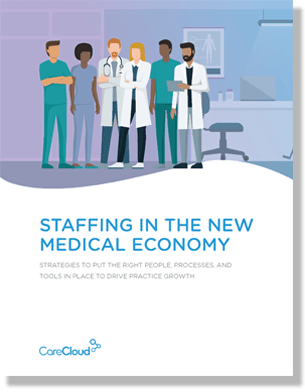If you’ve been wondering about cloud computing’s status among evolving technologies, the time is right to assess its ability to bring value to healthcare organizations.
Some are skeptical of cloud computing’s “chaotic” use, but experts such as Mariano Maluf, CTO at Atlanta-based IT services firm GNAX, say you should strongly consider the cloud – while keeping some basic tips in mind.
“The shifting IT landscape is prompting more and more questions around cloud computing models and their immediate value proposition,” said Maluf. “Changes in work style and device formats, coupled with new application platforms and delivery methods, all coalesce to challenge the IT status quo.”
“Given the state of technology today, it’s clear that when used in the right context, cloud computing and storage models can be effectively leveraged today, with tangible benefits and real value,” he added. “This is an irreversible trend, so caution does not mean inaction; you will be better off by learning how to live in this new reality sooner rather than later.”
Maluf outlined the basic dos and don’ts of cloud computing as follows:
1. Do learn about cloud technologies. This includes industry trends and available services, said Maluf. “All clouds are not created equal, and there are important distinctions, [like] consumer-oriented versus enterprise-grade,” he said. “Research cloud service providers and their capabilities and services.”
2. Don’t be fooled by pitches. Beware of the one-size-fits-all pitch, said Maluf. “Seek a blend of prescriptive and flexible strategies, focused on your particular set of challenges.”
3. Do assess your environment and capabilities. This will allow you to identify short-term and long-term opportunities, Maluf said. “Understand your application landscape, and categorize and prioritize environments.”
4. Don’t assume the cloud is a “cure-all” remedy. There are environments that can’t – and shouldn’t – be migrated initially, said Maluf. “Cloud is a multi-dimensional solution, so there’s life beyond the private cloud,” he explained. “Hybrid models, secure, multi-tenant public cloud infrastructures, or enterprise-grade cloud storage platforms can be very effective answers.”
5. Do map certain services. This includes DR, image archiving and application delivery against your assessment, said Maluf. “Some cloud quick-wins will hopefully become obvious next steps.”
6. Don’t forget the details. Maluf said to be sure to review aspects such as architectural dependencies, refresh cycles and application latency tolerance. And, he added, don’t neglect application performance management analysis, “otherwise, the pre-and post-cloud migration user experience will be hard to quantify, and service level agreements will be tough to [implement] and effectively manage.”
7. Do start with a strategy. Start building an integrated cloud strategy, and an associated roadmap said Maluf. “Focus on incremental value by emphasizing infrastructure delivery and management simplification,” he said.
8. Don’t delay. Now is the time to start thinking about the cloud, said Maluf. “There’s a price for waiting, so pursue your cloud strategy with caution, but do take incremental steps.”
9. Do remember that change management matters. “A cloud strategy isn’t just about changing the ‘plumbing,'” said Maluf. “Abstracting infrastructure layers and providing metered, self-service elastic growth requite a multi-layer approach.”




